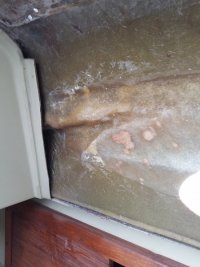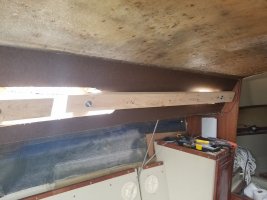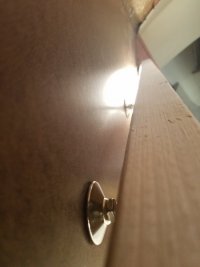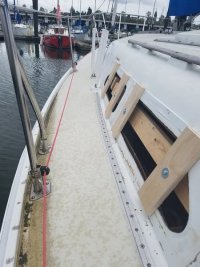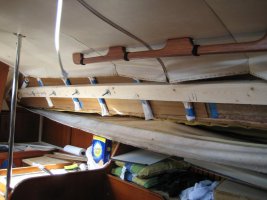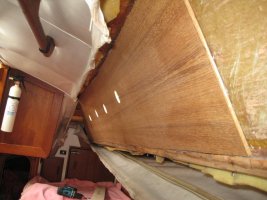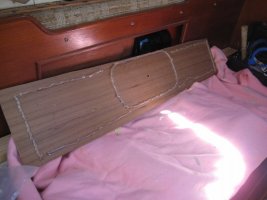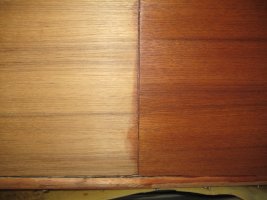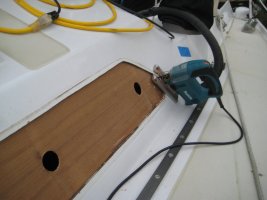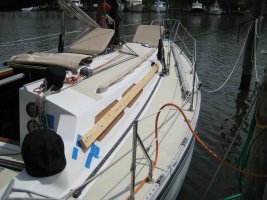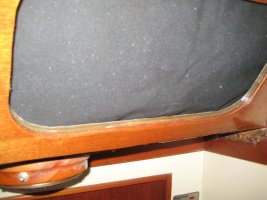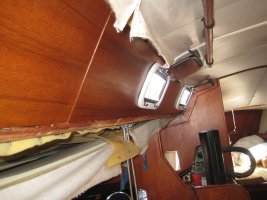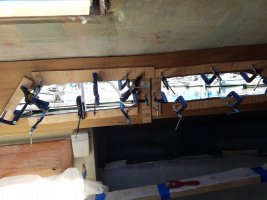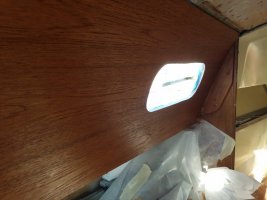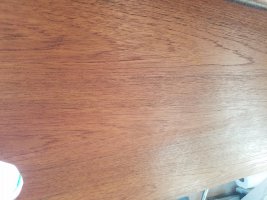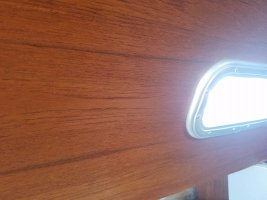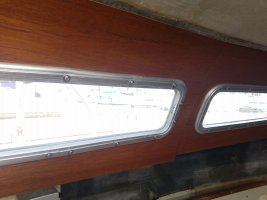I finally got it up!
Including my original idea using cabinet feet, it took 4 attempts, but I finally got it up. The only thing I got to work was using strips of plywood and a ton of clamps around the ports. I had to give up having a good bond between the forward and mid port, but I think it was the only way. My 25+ seems to have a smaller radius curve that didn't allow the 2x4 to conform to the curve. At best, I ended up with 1/4" gaps around the ports.
My first attempt at the 2x4 solution failed when I tested the flex. I only got an inch into the necessary 2 - 3 inch of flex before it broke into 3 pieces.
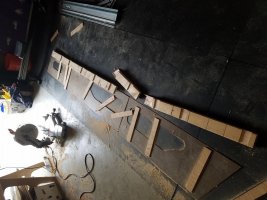
The second one was better, but still left large gaps at the ports. I'm sure you could make it work by picking out a better 2 x 4 (vertical grain or center cut) and playing with the scarf depth and interval, but I really didn't want to down that much time with a disposable jig.
I ended up purchasing 18 clamps from harbor freight and securing the plywood around the ports. The flex in the plywood seemed to provide enough force to get a good bond around the top and sides, but I'll find out tomorrow when I pull the clamps off. I ended up using thickened epoxy applied with a notched spreader. I got good ooze around the ports and bottom edge. I would have liked a little more around the top, but I think it's good enough. Im feeling pretty good about it.
